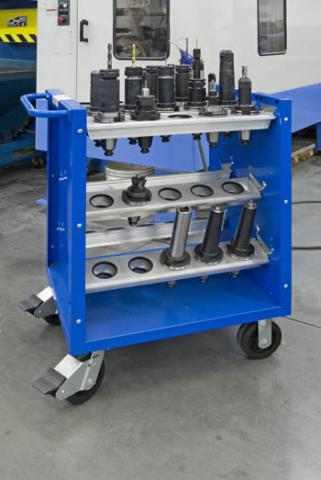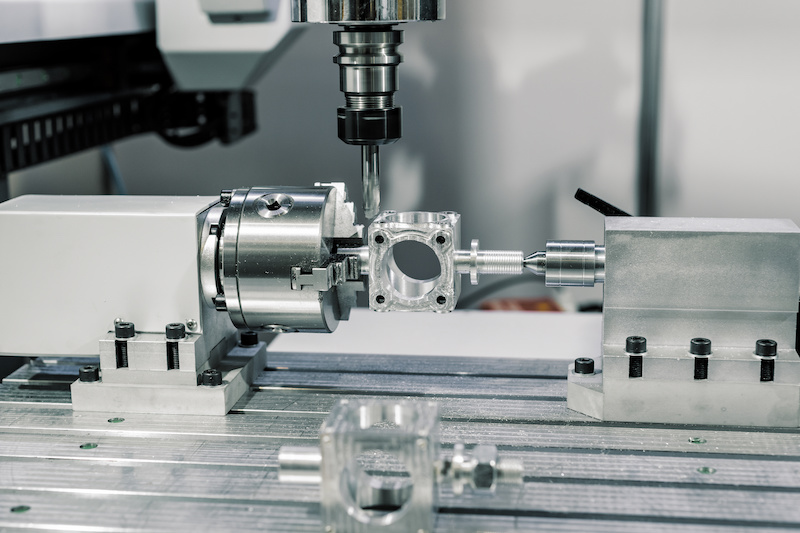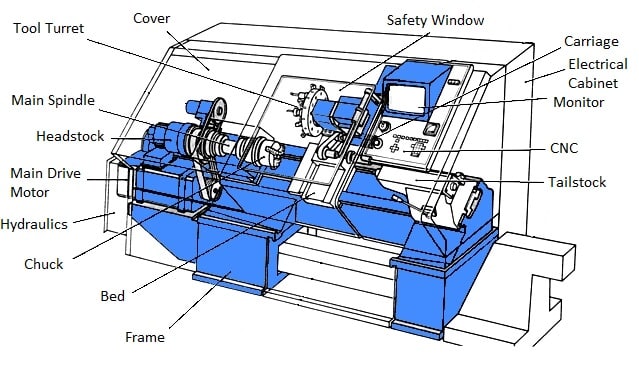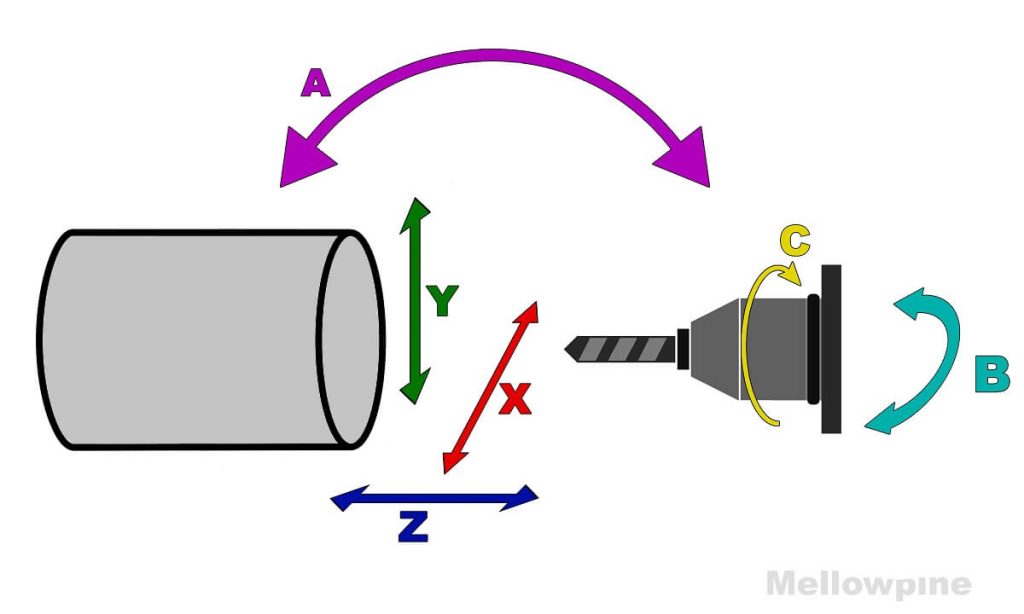Table of Contents
If you’re interested in learning how to set up a CNC lathe, you’re in the right place. CNC lathes are powerful machines that are used to cut and shape metal into precision parts. However, setting up a CNC lathe can be a daunting task, especially if you’re new to the world of machining.
In this article, we’ll cover the basics of setting up a CNC lathe, including choosing the right tools, preparing the machine for use, and programming the machine to create your desired part. Whether you’re a seasoned machinist or just getting started, this guide will provide you with the knowledge and skills you need to set up and operate a CNC lathe with confidence. So, let’s get started!
To set up a CNC lathe, follow these steps:
- Check the machine’s power source and turn it on.
- Load the program into the machine.
- Install the workpiece and secure it in place.
- Install the cutting tool and adjust it according to the program.
- Set the machine’s parameters, such as speed and feed rate.
- Run a test program to ensure everything is working correctly.
How to Set Up CNC Lathe?
CNC lathes are essential machines in the manufacturing industry. They are used to create complex and precise parts for a variety of applications. Setting up a CNC lathe can be a daunting task, but with the right approach, it can be done quickly and efficiently. In this article, we will guide you through the process of setting up a CNC lathe step-by-step.
Step 1: Preparing the Machine
Before setting up the CNC lathe, it is essential to prepare the machine. Start by checking the machine for any damage or defects. Check for any loose screws or bolts and tighten them if necessary. Next, clean the machine thoroughly and remove any debris or dust. Finally, make sure that the lathe is level and securely fastened to the floor.
Once the machine is prepared, it’s time to install the necessary software. Most CNC lathes come with software that needs to be installed on a computer. Follow the manufacturer’s instructions to install the software and connect the computer to the lathe.
Step 2: Setting up the Workpiece
The workpiece is the part that you want to machine. It is essential to properly secure the workpiece before starting the lathe. Begin by selecting the appropriate chuck or collet for the workpiece. Next, mount the chuck or collet onto the spindle and tighten it securely.
Now, insert the workpiece into the chuck or collet and tighten it securely. Make sure that the workpiece is centered and aligned with the lathe’s axis. Finally, adjust the cutting tool to the correct position and angle.
Step 3: Setting up the Cutting Tool
Setting up the cutting tool is a crucial step in the process. The cutting tool will determine the quality and precision of the machined part. Start by selecting the appropriate cutting tool for the job. Next, install the cutting tool into the tool holder and tighten it securely.
Now, adjust the tool holder to the correct position and angle. Use the manufacturer’s instructions to set the tool height and offset. Finally, set the cutting parameters such as speed, feed rate, and depth of cut.
Step 4: Programming the CNC Lathe
Programming the CNC lathe is the next step in the process. The programming language used for CNC lathes is called G-code. Start by creating a program that includes all the necessary commands for the lathe to perform the operation.
Next, transfer the program to the lathe and load it into the CNC controller. Once the program is loaded, run a test to ensure that everything is working correctly.
Step 5: Operating the CNC Lathe
Now that the lathe is set up and programmed, it’s time to start machining. Start the lathe and monitor the operation closely. Make sure that the cutting tool is performing correctly and that the workpiece is being machined according to the program.
Adjust the cutting parameters as necessary to achieve the desired results. Finally, inspect the machined part and make any necessary adjustments.
Step 6: Shutting Down the CNC Lathe
Once the machining operation is complete, it’s time to shut down the lathe. Start by turning off the lathe and disconnecting the computer. Next, clean the machine and remove any debris or dust.
Finally, inspect the machine for any damage or defects, and make any necessary repairs.
Benefits of CNC Lathe
CNC lathes offer several benefits over traditional lathes. They are faster, more precise, and more versatile. CNC lathes can produce complex parts with high accuracy and consistency. They are also easy to set up and operate, reducing the time and cost of machining operations.
CNC Lathe vs. Traditional Lathe
The main difference between CNC lathes and traditional lathes is the level of automation. CNC lathes are fully automated, while traditional lathes require manual operation. CNC lathes offer higher accuracy, faster production rates, and more versatility than traditional lathes.
Conclusion
Setting up a CNC lathe can be a complex process, but with the right approach, it can be done quickly and efficiently. By following the steps outlined in this article, you can set up your CNC lathe and start machining complex parts with high accuracy and consistency. With the benefits of CNC lathes over traditional lathes, they are an essential tool in the manufacturing industry.
Frequently Asked Questions
How do I set up a CNC lathe?
Setting up a CNC lathe requires careful attention to detail to ensure that everything is working correctly. The first step is to make sure that the lathe is clean and free of any debris. Next, you will need to install the cutting tools and adjust them to the correct height. This involves using a tool height gauge to set the height of each tool.
Once the tools are in place, you will need to set up the workholding. This involves selecting the appropriate chuck or collet and securing the workpiece in place. You will also need to set the workpiece zero point to ensure that the lathe knows where to start cutting.
How do I program a CNC lathe?
Programming a CNC lathe can be a complex process, but it is essential for producing accurate and repeatable parts. The first step is to create a CAD model of the part you want to make. Once you have the model, you can use CAM software to generate a toolpath that the lathe can follow.
The toolpath will include information about the cutting speed, feed rate, and depth of cut for each tool. You will also need to specify the tool change sequence and any other necessary parameters. Once the program is complete, you can transfer it to the lathe and begin machining.
What are the important components of a CNC lathe?
A CNC lathe is a complex machine that relies on many different components to operate effectively. Some of the most important components include the spindle, chuck or collet, cutting tools, and workholding. The spindle is responsible for rotating the workpiece, while the chuck or collet holds it in place.
The cutting tools are used to remove material from the workpiece, and they must be carefully selected and adjusted to ensure that they are cutting at the correct angle and depth. Finally, the workholding is used to secure the workpiece in place and must be designed to withstand the forces generated during machining.
How do I maintain a CNC lathe?
Maintaining a CNC lathe is critical to ensure that it continues to operate effectively and produce high-quality parts. The first step is to keep the machine clean and free of any debris. This includes regularly removing chips and coolant from the machine.
You should also inspect the cutting tools and workholding regularly to make sure that they are in good condition. Replace any worn or damaged components as needed. Finally, you should perform regular maintenance tasks such as lubrication and calibration to ensure that the machine is operating at its best.
What are some common problems with CNC lathes?
Like any machine, CNC lathes can experience a range of problems that can affect their performance. Some common issues include tool wear, incorrect tool height, and workpiece misalignment. These problems can lead to poor surface finish, dimensional inaccuracies, and even machine crashes.
To avoid these problems, it is important to perform regular maintenance and inspections. You should also monitor the machine carefully during operation and make adjustments as needed. If you do encounter a problem, it is important to address it quickly to minimize the impact on production.
In conclusion, setting up a CNC lathe may seem daunting at first, but with the right tools and knowledge, it can be a straightforward process. Remember to thoroughly read the manufacturer’s manual and safety guidelines before starting.
Firstly, ensure that the machine is positioned correctly in a well-ventilated area with adequate lighting. Secondly, properly install the necessary tooling and ensure that it is tightened securely. Finally, input the correct program and parameters to run the machine smoothly.
By following these steps and regularly maintaining the machine, you can ensure that your CNC lathe will function efficiently and produce high-quality parts. With practice and experience, you can become proficient in setting up and operating a CNC lathe, making it a valuable asset in your manufacturing process.
Request a quote today!
[contact-form-7 id="1578" title="Contact form"]
Please compress the file into a ZIP or RAR file before uploading. Alternatively, send through your RFQ by email.
enquires@unitymanufacture.com





